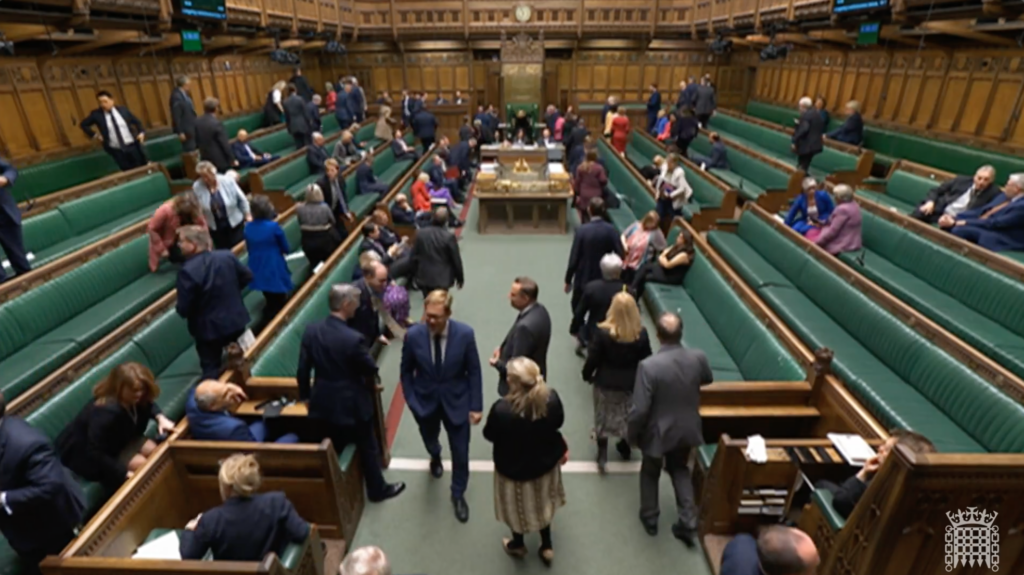What are A-Levels?
A-Levels are properly referred to as the Advanced General Certificate of Education. They are one of the types of principal examination course studied by pupils in England, Wales and Northern Ireland immediately after the conclusion of compulsory education, usually between the ages of 17 and 18. They are the principal entry requirements for most higher education courses.
Scotland has a different system altogether, with examinations called Higher grades and Advanced Higher grades.
A-Levels demand more individual, in-depth study than GCSEs and place greater emphasis on traditional academic and study skills.
A-Levels are typically studied for in Further Education Colleges, Sixth Form Colleges or school sixth forms, although adult learners can undertake A-Level courses in a variety of other settings. Most educational institutions set certain GCSE (or equivalent) qualifications as entry requirements to study for A-Levels.


The Office of Qualifications and Examinations Regulation (Ofqual) is the regulator of qualifications, examinations and assessments in England and vocational qualifications in Northern Ireland.
Between 2015 and 2018, the government in England introduced a series of reforms to A Levels. These reforms moved them from a modular structure to a linear structure with exams at the end of the course.
Specifically the reforms reduced the coursework aspect in A Levels. They also reduced the number of available A Levels, eliminating options such as archaeology and home economics. AS Levels became established as a fully separate qualification, although they still encompass the first year of the full A Level content.

A levels have become far more exam based following the government’s 2015 reforms.
The A-level system – Pros and Cons
A-Levels have, since the 1950s, been held up as representing the “gold standard” of school educational attainment. As with GCSEs, continually rising pass rates – topping 95 per cent in 2003 for the first time – have led to claims that that gold standard has been devalued and that courses are becoming easier.
It is also alleged in many quarters, that some courses are clearly easier than others, and that this has led to a migration of students away from “difficult” subjects, such as mathematics, physics and modern languages, towards subjects that are perceived as easier. Official figures certainly show a trend of fewer candidates taking those courses that are regarded as “harder”.
A further concern has been an apparent increasing gap which has emerged between students at state schools and private schools. The Assessment and Qualifications Alliance reported that A-Level results at comprehensive schools had remained relatively static, while private schools had made improvements. 15.7 per cent of all A-Level papers were awarded a grade A, but this rose to 31.7 per cent of private school entries. The controversy was fuelled further by the introduction of the new A* grade with exam results in 2010 suggesting that pupils in the independent sector were three times more likely to achieve an A* than their comprehensive counterparts.
The History of A Levels
Early Years
GCE A-Level and O-Level examinations were first sat in 1951, on the premise that students took one or the other. Until 1953, A-Level exams were graded only as a pass or fail, at which point a “distinction” grade was introduced. In 1963, a five grade scheme was introduced, with quotas for the allocation of grades: 10 per cent of candidates would receive an A grade, 15 per cent a B, 10 per cent a C, 15 per cent a D, 20 per cent an E, and a further 20 per cent would receive an O Level pass.
This arrangement persisted until the 1980s, with ongoing concern being voiced about the narrowness of many grade boundaries brought about by the quota system: in 1982, some subjects saw a B and a D separated by a margin of just 8 marks. Throughout the 1970s and early 1980s, a campaign to switch the system to a mark-boundary grading system was waged, which was finally successful in 1987. The O-Level pass grade was dropped this year, and replaced by the considerably narrower “N” grade, which signified a “near miss”.
1989 saw the introduction of the Advanced Supplementary or AS Level – not to be confused with the Advanced Subsidiary AS of today – in response to longstanding concerns that students were not receiving a sufficiently broad education in concentrating entirely on a few (typically three) A-Level subjects. AS was intended as a qualification of equal difficulty to A Level, taken at 18, but with half the content (and as such half the “value” for university admissions purposes). However, AS never really took off, a situation acknowledged in the 1996 Dearing Report, which proposed the current Advanced Subsidiary and A2 system.
A-Levels and the Labour Government (1997 to 2010)
In 2000, the new Labour Government published the outcome of its “Curriculum 2000” review programme, proposing a substantial overhaul of the existing A-Level system. In order to address concerns about the breadth of the curriculum, a new modular approach was introduced under which most students study four subjects with three “assessment units” each in their first year of study.
Completion of this AS stage can be a qualification in its own right, or else it constitutes 50 per cent of the marks towards the full A-Level. A2 units, undertaken in the second year of study, reflect the harder elements of the old A-Level syllabuses and contribute the remaining 50 per cent of the marks.
In 2002, it was alleged that exam boards had manipulated grades in order to ensure that the introduction of Curriculum 2000 was not seen to have led to “grade inflation”. A review, headed by Mike Tomlinson, the former Chief Inspector of Schools, ordered a review of grade boundaries – which required reconsideration of 90,000 students’ results.
At the time, Ron McLone of the OCR board complained that neither the DfES nor the QCA had given advice on how much harder A2 had to be than AS until the last minute. In the end, only a relatively small number of students had their results upgraded, but some did lose out on university places as a result of the problems, and confidence in the system was shaken. The crisis led to the sacking of the head of the QCA, Sir William Stubbs and the resignation of the Education Secretary Estelle Morris.
In response to the difficulties experienced with A-Levels in recent years, the Government set up the Tomlinson Review of 14-19 education. The final Tomlinson Report was published in October 2004 and recommended that A-Levels and GCSEs should be subsumed within a 14-19 diploma model education system. It proposed a four-level diploma system with students taking exams whenever they are ready. At the advanced diploma level there would be extra questions designed to stretch the very brightest and allow universities to distinguish between the top students.
Speaking immediately after the Tomlinson Report Prime Minister Tony Blair insisted that A-Levels were here to stay.
In November 2006, the government announced plans to introduce an A* grade for A-levels from 2010. The government said it would also provide funding to ensure that one state school in each education authority offered the International Baccalaureate.
The year 2007 marked a quarter century of improving A-Level grades – reopening the debate on grade inflation. The government rejected claims that exams were getting easier, insisting this devalued the hard work of teachers and students. Independent research, however, has found students’ core skills are failing to improve in-line with rising exam grades. Higher education institutions have also been increasingly vocal in criticising the poor quality of many first year students.
Subsequently new A2 exams were designed to “stretch and challenge” the brightest students and the new A* grade first awarded in August 2010 requires candidates to achieve both a grade A on the A-Level overall and at least 90% or more across the A2 units.
Balls delays A-Level review to 2013
A-Levels and the Conservative/Coalition Government (Since 2010)
In March 2012, Education Secretary Michael Gove wrote to Ofqual outlining his concerns about the structure of A levels and proposed certain changes. Ofqual launched a consultation in the summer on the structure and assessment arrangements of A-levels.
Subsequently, in January 2013, Mr Gove outlined future changes to be made to A-level structure, including the development of new AS levels as a standalone qualification. He also confirmed that leading universities would be more closely involved in developing the content of new A levels, beginning with the subjects most commonly required for undergraduate study.
In reforming A-Levels in recent years, the government has striven, in its mind, to improve the integrity of A-Levels. Defending the changes, Michael Gove as Education Secretary, said, “Current A-levels do not always provide the solid foundation that students need to prepare them for degree-level study and for vocational education”, adding, “The modular nature of the qualification and repeated assessment windows have contributed to many students not developing deep understanding or the necessary skills to make connections between topics”.
According to Mr Gove, there was “clear dissatisfaction” among leading university academics about the preparation of A-level pupils for advanced studies and nearly three-quarters of lecturers reported having had to adapt their teaching approaches for underprepared first year undergraduates. The governments reforms were met with some objections by the teaching unions.
A-Levels and the Coronavirus pandemic (2020/21)
A further adjustment to the administration of A-Levels was made for the 2019/2020 and 2020/2021 academic years in response to the coronavirus pandemic. With schools in England physically closed between March and June 2020, and between December and March 2021, it was announced that traditional A-Level exams for those academic years would not go ahead.
In the spring of 2020, the Education Secretary Gavin Williamson detailed how an Ofqual algorithm would modulate teacher assessed grades. Williamson repeatedly defended the algorithm arguing it was the only way to stop grade inflation.
However, the release of ‘standardised’ A-Level grades on 13 August 2020 generated widespread criticism of this algorithm from schools and colleges across the country. In some schools, the awarded A-Level grades were up to 40% lower than the predictions given by teachers, with 3% seeing a decrease of two grades. Because the algorithm used previous school attainment as part of its calculation process, one student from a traditionally ‘underperforming’ school was more likely to be downgraded compared to another student of equal intelligence from a high-achieving school.
The Education Secretary Gavin Williamson came under significant pressure to announce that unmodified teacher assessed grades would be accepted. After a delay, Williamson committed to this U-turn announcing that he was ‘incredibly sorry’ for the distress caused to pupils.
Quotes
“The ending of the modular structure of A-levels, the de-coupling of AS levels and A-levels and other changes announced previously, such as limiting resits, are all profound reforms that should not be contemplated lightly. The fact that these changes are being taken forward in a cavalier, evidence-lite fashion, which is the norm for this Coalition Government, should be of deep concern to all those who are interested in a high quality, 16 plus qualifications system.” – Chris Keates, Former General Secretary of the NASUWT – January 2013
“It is of paramount importance that new A-levels command the respect of leading universities. Together, these changes will enhance the reputation of A-levels, better prepare more students for higher education, and ensure that competition for university places is fairer.” – Education Secretary Michael Gove – January 2013


























